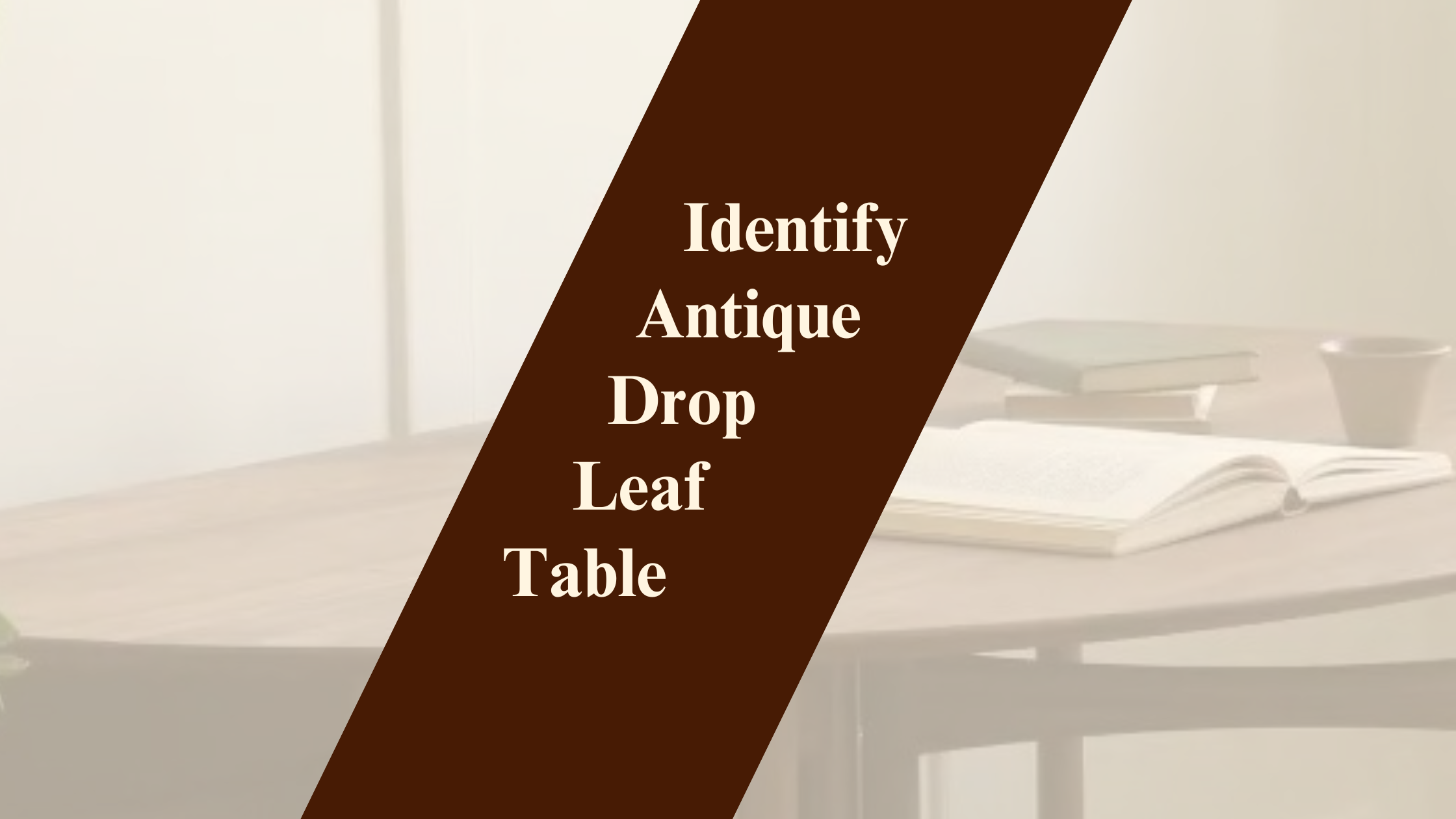Antique drop-leaf tables are not only functional but also pieces of history and craftsmanship. Whether you’ve inherited one or stumbled upon a potential gem, knowing how to identify an antique drop-leaf table can be an exciting journey into the past. In this article, we’ll guide you through the process of recognizing these timeless pieces and share valuable insights to help you on your quest.
Characteristics of Antique Drop-Leaf Tables
1. Examining the Wood
Antique drop-leaf tables are often crafted from high-quality wood, such as oak, mahogany, or cherry. Begin by closely inspecting the wood’s grain, color, and texture. Antique wood tends to have a rich patina and may show signs of wear and age.
2. Table Joinery
Inspect the joinery methods used in the table’s construction. Traditional joinery techniques like dovetail, mortise and tenon, or wooden pegs are indicative of antique craftsmanship. Modern screws or metal fasteners may suggest a newer piece.
3. Patina and Wear
Antique drop-leaf tables often exhibit signs of use and age, which contribute to their unique character. Look for signs of wear on the table’s edges, corners, and legs. A genuine patina can be an excellent indicator of age and authenticity.
Identifying Antique Drop-Leaf Table Styles
Antique drop-leaf tables come in various styles, each with its distinctive features:
1. Gate-Leg Tables
Gate-leg tables have swing-out legs that support the leaves when extended. They often have a rectangular or oval top and are known for their versatility.
2. Pembroke Tables
Pembroke tables feature a single drawer and delicate, tapered legs. They are typically small and elegant, perfect for intimate settings.
3. Duncan Phyfe Tables
Duncan Phyfe tables are characterized by their lyre-shaped or pedestal bases. They often showcase classical and neoclassical design elements.
Research and Documentation
To further identify and appreciate your antique drop-leaf table, consider these steps:
- Consult Antique Reference Books: Invest in books or online resources dedicated to antique furniture. They can help you compare your table to known styles and designs.
- Seek Appraisals: Professional antique appraisers can provide expert insights into the age and value of your table.
- Visit Antique Shops and Shows: Attend antique shows and visit reputable antique shops. These experiences can expose you to a wide range of antique tables and styles.
Identifying an antique drop-leaf table is a rewarding endeavor that combines historical curiosity with a love for craftsmanship. By examining wood characteristics, joinery methods, patina, and style, you can uncover the secrets of these timeless pieces. Remember that each antique table has a unique story to tell, making your journey into the world of antiques a truly enriching experience. Happy exploring!

Leave a Reply